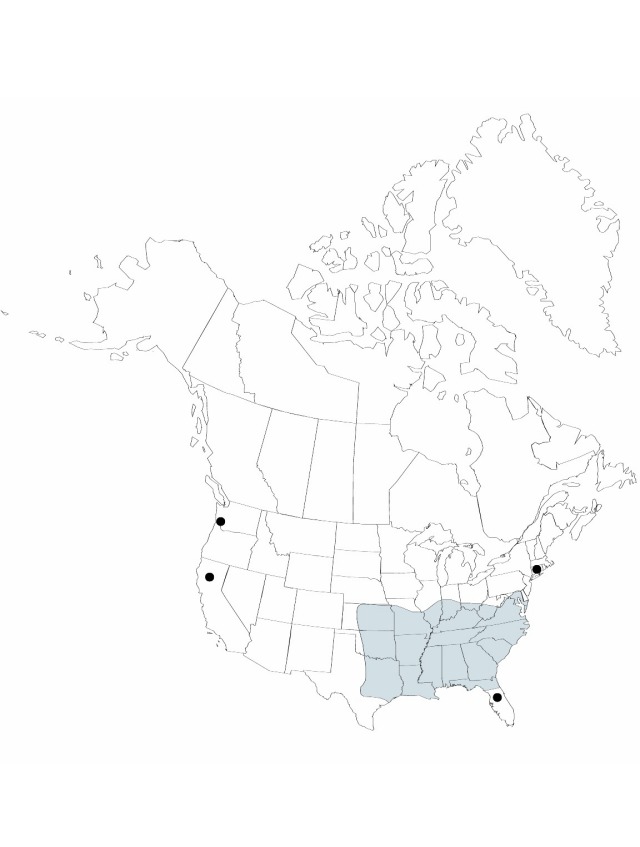Juncus diffusissimus
Proceedings of the Academy of Natural Sciences of Philadelphia 14: 9. 1862.
Herbs, perennial, cespitose, 2.5–6.5 dm. Culms erect, terete, 1–3 mm diam., smooth. Cataphylls 0–1, maroon or dark green, apex obtuse. Leaves: basal 1, cauline 2–3; auricles 1–2.1 mm, apex rounded, membranaceous; blade maroon or dark green, terete to compressed, 3–20 cm × 1–2.4 mm. Inflorescences terminal panicles of 30–70(–130), 5–20 cm, branches spreading; primary bract erect; ; heads (1–)2–10-flowered, hemispheric or narrower, 5–10 mm diam. Flowers: tepals green to straw-colored, lanceolate, apex acute; outer tepals (2–)2.6–3.2 mm; inner tepals (1.8–)2.3–3 mm; stamens 3, anthers 1/2–2/3 filament length. Capsules exserted, , straw-colored, 1-locular, linear-lanceoloid, 4–5.2 mm, apex acute, valves separating at dehiscence. Seeds oblong-ellipsoid, 0.3–0.4 mm, not tailed; body clear yellow-brown.
Phenology: Fruiting summer.
Habitat: In soft mucky substrates, marshy shores, sloughs, occasionally in wet wooded places, often in shallow water, commonly abundantly colonizing wet, sandy- alluvial outwash in ditches and clearings
Elevation: 10–1000 m
Distribution

Introduced; Ala., Ark., Calif., Conn., Fla., Ga., Ill., Ind., Kans., Ky., La., Md., Miss., Mo., N.C., Ohio, Okla., S.C., Tenn., Tex., Va., Wash., W.Va., probably South America.
Discussion
Selected References
None.